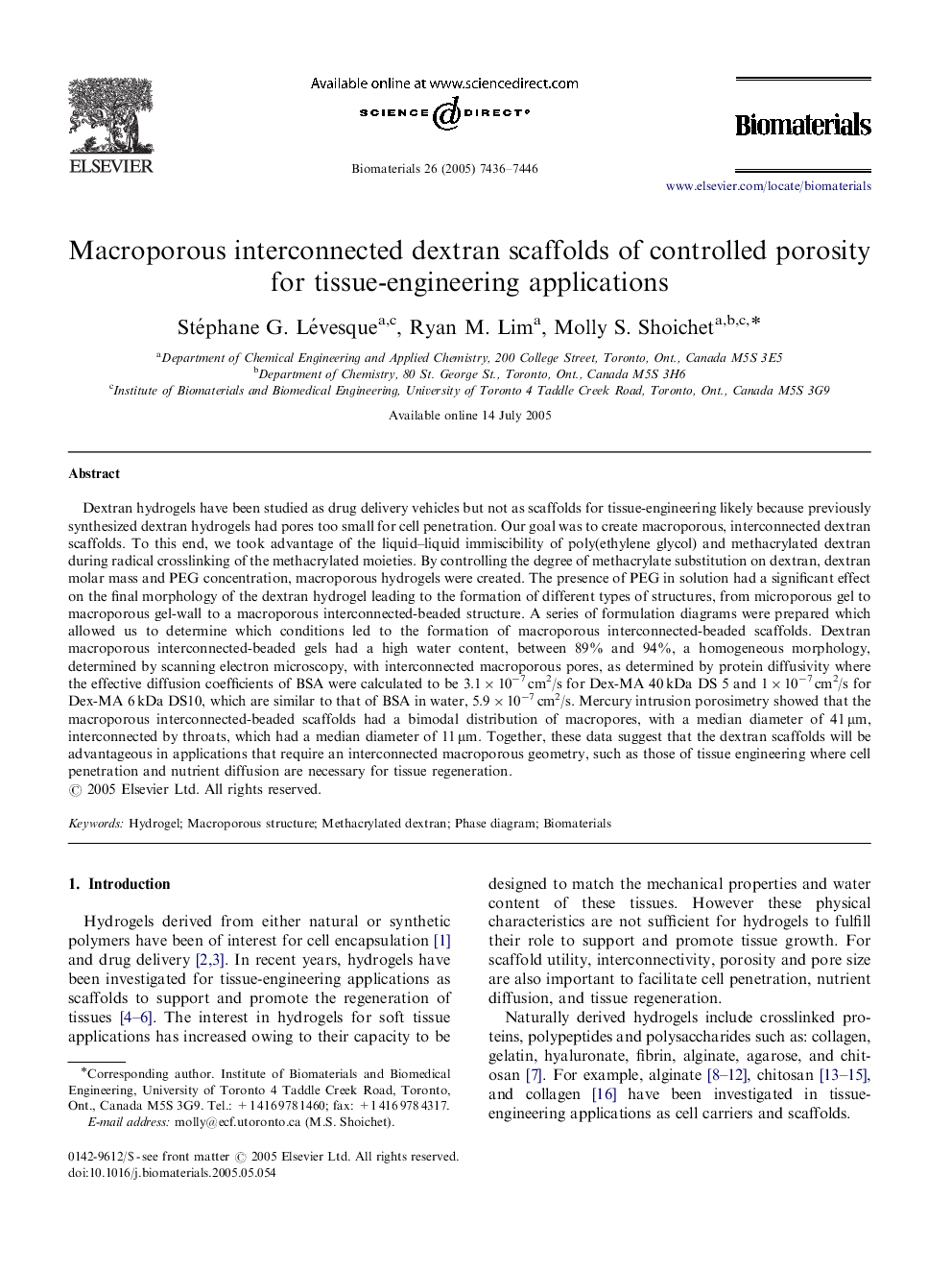| Article ID | Journal | Published Year | Pages | File Type |
|---|---|---|---|---|
| 10914 | Biomaterials | 2005 | 11 Pages |
Dextran hydrogels have been studied as drug delivery vehicles but not as scaffolds for tissue-engineering likely because previously synthesized dextran hydrogels had pores too small for cell penetration. Our goal was to create macroporous, interconnected dextran scaffolds. To this end, we took advantage of the liquid–liquid immiscibility of poly(ethylene glycol) and methacrylated dextran during radical crosslinking of the methacrylated moieties. By controlling the degree of methacrylate substitution on dextran, dextran molar mass and PEG concentration, macroporous hydrogels were created. The presence of PEG in solution had a significant effect on the final morphology of the dextran hydrogel leading to the formation of different types of structures, from microporous gel to macroporous gel-wall to a macroporous interconnected-beaded structure. A series of formulation diagrams were prepared which allowed us to determine which conditions led to the formation of macroporous interconnected-beaded scaffolds. Dextran macroporous interconnected-beaded gels had a high water content, between 89% and 94%, a homogeneous morphology, determined by scanning electron microscopy, with interconnected macroporous pores, as determined by protein diffusivity where the effective diffusion coefficients of BSA were calculated to be 3.1×10−7 cm2/s for Dex-MA 40 kDa DS 5 and 1×10−7 cm2/s for Dex-MA 6 kDa DS10, which are similar to that of BSA in water, 5.9×10−7 cm2/s. Mercury intrusion porosimetry showed that the macroporous interconnected-beaded scaffolds had a bimodal distribution of macropores, with a median diameter of 41 μm, interconnected by throats, which had a median diameter of 11 μm. Together, these data suggest that the dextran scaffolds will be advantageous in applications that require an interconnected macroporous geometry, such as those of tissue engineering where cell penetration and nutrient diffusion are necessary for tissue regeneration.
